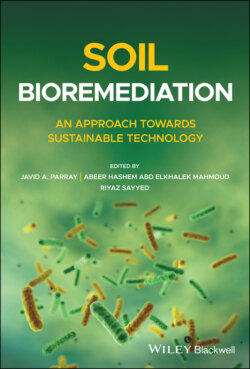Читать книгу Soil Bioremediation - Группа авторов - Страница 51
3.3.1.1 Degradation of Xenobiotics
ОглавлениеOne of the potential environmental applications for laccases is the bioremediation of contaminated soils, as laccases are able to oxidize toxic organic pollutants, such as various xenobiotics, Polycyclic Aromatic Hydrocarbons (PAHs), chlorophenols, and other contaminants [15, 16]. Phenolic compounds are present in wastes from several industrial processes: coal conversion, petroleum refining, production of organic chemicals, and olive oil production among others. Immobilized laccase was found to be useful in removing phenolic and chlorinated phenolic pollutants [17]. Laccase‐Mediator‐Systems (LMS) has been extensively studied in the oxidation of recalcitrant PAHs, main components of several ship spills. In this sense, laccase is being included in several enzymatic bioremediation programs [18].
Laccase may be applied to degrade plastic waste having olefin units and can be used to degrade polyurethanes. LMS facilitated the degradation of phenolic compounds (environmental hormones) from biphenol and alkylphenol derivatives and also the decomposition of fluorescent brighteners [18].
